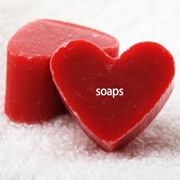A few weeks ago, one of my recent students asked me if there is anything I wish I had taught but never got around to teaching. I thought the question was pretty funny. I told her I had ten years of material.
In truth, ten years of material is a pretty conservative estimate but not because of the quantity. The way I see it, there is never any shortage of material as long as the instructor continues to explore, learn and grow. Ideally, they will with one foot in academics and one in the real world but sometimes one or the other will suffice. No one ever wants to feel dusty or complacent unless they've given up.
Eventually, I settled on five things I wish every advertiser, marketer and PR pro knew because I think all of us, at one time or another, grows weary of watching people fail. That's the way marketing works. You can put in hard work or learn the hard way.
• A Content Strategy Is Not A Marketing Strategy. As content marketing has become a dominant digital marketing tactic, more businesses want to create elaborate content processes, build massive audiences, and become perceived as industry experts. But sometimes you have to ask to what end.
Dial back the meaning of a marketing strategy a few years ago and you might find a creative team tasked with expanding the dandruff shampoo market among men. You might remember how they did it too. The original advertisements showed men in dark suits with their shoulders dusted with flakes, creating a compelling reason to look for the problem and find a solution. Head & Shoulders.
• Breaking Through The Clutter Means More Than A Clever Message. Everywhere you look, marketers want to convince clients that brand visibility, original communication, and writing tips are all they need to succeed. But sometimes marketing means innovation at the product and service development level.
If you operate a lemonade stand on a block with five more lemonade stands, sometimes you have to stop pushing the pink and break open a box of sugar cookies. That is how Federal Express got its start. It started as a small Memphis-based package handler that won with the promise of delivering parcels overnight. So while everybody else talked a good game, they went out and did something.
• Following The Leader Will Make You A Follower. There are plenty of reasons that marketers and advertisers are always looking for best practices, case studies and trends to follow. Sometimes people are looking for new ideas. There is nothing wrong with that. But sometimes people waste time on easy.
If you have ever revisited the book In Search of Excellence: Lessons from America's Best-Run Companies, you know what I mean. It used to be one of my favorite books. There are still some good ideas inside, many of those business aren't considered the best run companies anymore. While everyone was busy trying to follow their lead, someone else invented better operations and opened new markets.
• It's Not Who You Know, But Who Wants To Know You. Given some estimates attribute 60-80 percent of job placements to personal relationships, one might assume that the old adage that who you know really is more important than what you know. But that's not entirely true.
The key word in the compound phrase "personal relationships" is "personal" and not "relationships," which suggests the size of the network is less important than the depth of the connection. People who boast about being connected or treat their network like a commodity almost never come through. It's the people who don't talk about who they know that are more likely to surprise you.
• Stating The Obvious Is One Step From Redundant. Everybody loves to talk about elevator speeches and how to fix them. That might be reason enough to toss your elevator speech out the window. You can say something a million times and even lace all those SEO links with all the right terms, but so what?
Every time you introduce yourself as a noun, the person you're speaking to asks themselves if they need one. Do I need a plumber? Do I need a social media expert? Do I need an advertising agency? Maybe it would be more worthwhile to conjure up a different question inside their heads. Or, better yet, keep your mouth shut and let them tell you what they need.
Incidentally, Michael Port recently reinforced this last point in his book Book Yourself Solid Illustrated. He sent me a digital version a few weeks ago, but I felt it was too weird to publish my review while I was being swept away by life. The review is mostly written. I'll probably add it next week unless someone wants me to write about something else. Maybe I'll have time to make a new masthead too.
In truth, ten years of material is a pretty conservative estimate but not because of the quantity. The way I see it, there is never any shortage of material as long as the instructor continues to explore, learn and grow. Ideally, they will with one foot in academics and one in the real world but sometimes one or the other will suffice. No one ever wants to feel dusty or complacent unless they've given up.
Eventually, I settled on five things I wish every advertiser, marketer and PR pro knew because I think all of us, at one time or another, grows weary of watching people fail. That's the way marketing works. You can put in hard work or learn the hard way.
• A Content Strategy Is Not A Marketing Strategy. As content marketing has become a dominant digital marketing tactic, more businesses want to create elaborate content processes, build massive audiences, and become perceived as industry experts. But sometimes you have to ask to what end.
Dial back the meaning of a marketing strategy a few years ago and you might find a creative team tasked with expanding the dandruff shampoo market among men. You might remember how they did it too. The original advertisements showed men in dark suits with their shoulders dusted with flakes, creating a compelling reason to look for the problem and find a solution. Head & Shoulders.
• Breaking Through The Clutter Means More Than A Clever Message. Everywhere you look, marketers want to convince clients that brand visibility, original communication, and writing tips are all they need to succeed. But sometimes marketing means innovation at the product and service development level.
If you operate a lemonade stand on a block with five more lemonade stands, sometimes you have to stop pushing the pink and break open a box of sugar cookies. That is how Federal Express got its start. It started as a small Memphis-based package handler that won with the promise of delivering parcels overnight. So while everybody else talked a good game, they went out and did something.
• Following The Leader Will Make You A Follower. There are plenty of reasons that marketers and advertisers are always looking for best practices, case studies and trends to follow. Sometimes people are looking for new ideas. There is nothing wrong with that. But sometimes people waste time on easy.
If you have ever revisited the book In Search of Excellence: Lessons from America's Best-Run Companies, you know what I mean. It used to be one of my favorite books. There are still some good ideas inside, many of those business aren't considered the best run companies anymore. While everyone was busy trying to follow their lead, someone else invented better operations and opened new markets.
• It's Not Who You Know, But Who Wants To Know You. Given some estimates attribute 60-80 percent of job placements to personal relationships, one might assume that the old adage that who you know really is more important than what you know. But that's not entirely true.
The key word in the compound phrase "personal relationships" is "personal" and not "relationships," which suggests the size of the network is less important than the depth of the connection. People who boast about being connected or treat their network like a commodity almost never come through. It's the people who don't talk about who they know that are more likely to surprise you.
• Stating The Obvious Is One Step From Redundant. Everybody loves to talk about elevator speeches and how to fix them. That might be reason enough to toss your elevator speech out the window. You can say something a million times and even lace all those SEO links with all the right terms, but so what?
Every time you introduce yourself as a noun, the person you're speaking to asks themselves if they need one. Do I need a plumber? Do I need a social media expert? Do I need an advertising agency? Maybe it would be more worthwhile to conjure up a different question inside their heads. Or, better yet, keep your mouth shut and let them tell you what they need.
Incidentally, Michael Port recently reinforced this last point in his book Book Yourself Solid Illustrated. He sent me a digital version a few weeks ago, but I felt it was too weird to publish my review while I was being swept away by life. The review is mostly written. I'll probably add it next week unless someone wants me to write about something else. Maybe I'll have time to make a new masthead too.



























